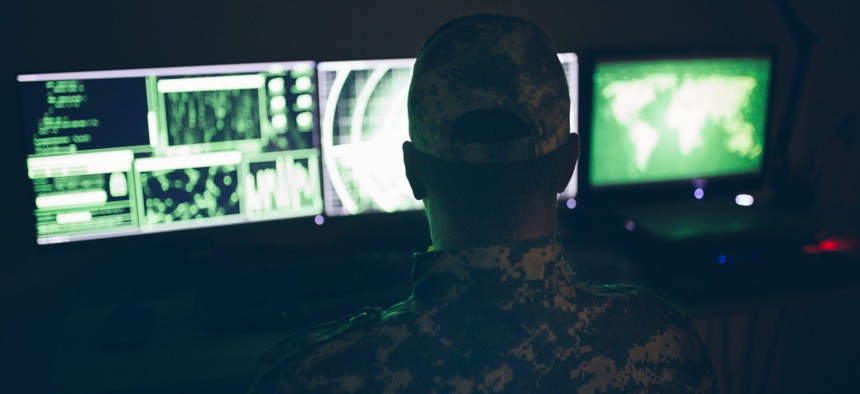DARPA's '3rd Wave' AI Aims to Compute Uncertainty Along with Accuracy
"Machine learning algorithms do not currently fit well into the modern statistical processing paradigm."
DARPA is launching a program to improve algorithmic processing in Pentagon artificial intelligence projects.
The Defense Advanced Research Projects Agency is formally soliciting contracts for its new AI Exploration program. The AIE will focus on what DARPA defines as its “third wave” of artificial intelligence research, which includes AI theory and application research that examines limitations with rule and statistical learning theories belying AI technologies.
“The pace of discovery in AI science and technology is accelerating worldwide,” the program announcement says. “AIE will enable DARPA to fund pioneering AI research to discover new areas where R&D programs awarded through this new approach may be able to advance the state of the art.”
The AIE’s goal is to invest in “high-risk, high-reward” artificial intelligence topics that will ideally lead to quick prototype development. Technologies fostered within the AIE will primarily be related to the Defense Department's national security initiatives.
Bryan Jacobs, program manager for the AIE’s Enabling Confidence division at DARPA, told Nextgov that the AIE program is focused on implementing machine learning algorithms into data processing chains that can compute both accuracy and uncertainty in their output results.
“The problem is that machine learning algorithms do not currently fit well into the modern statistical processing paradigm. Producing an accurate statistical model describing the uncertainty in the results of a machine learning algorithm, for example a deep neural network, is a computationally intensive process,” Jacobs said. “DARPA’s Enabling Confidence aims to find ways to overcome this hurdle so that AI can be fully integrated into statistical processing chains.”
He added that the EC’s focus within the AIE initiative is enabling new technologies that will refine the uncertainty estimates generated by these algorithms, to make better warfighting decisions, such as plotting the trajectory for an incoming fighter jet using data from several sensors or RADARs.
“Accurately estimating, predicting, and extrapolating information from multiple combined sensors and subsystems are all key to advancing AI performance—and in deriving and delivering reliable, actionable intelligence for military operations,” Jacobs said.
The total award value for the combined Phase 1 feasibility study and Phase 2 proof of concept option is capped at $1,000,000.





